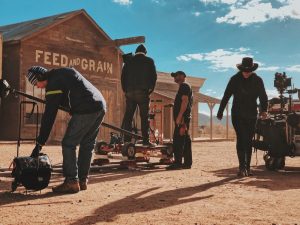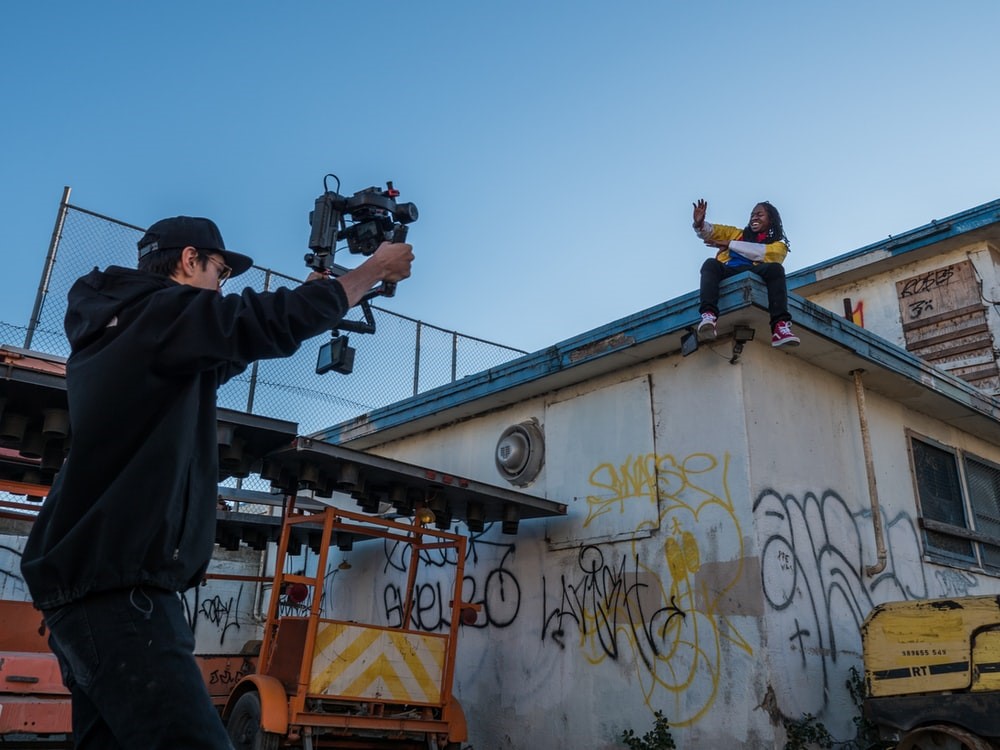Filmmaking During Coronavirus
The COVID-19 outbreak has drastically changed filmmaker’s life in 2020. What is expected to be a massively successful year for film producers has now been put on hold, impacting every part of the film making industry in an unprecedented way. Compared to other industries, filmmaking is tedious, labor intensive, with hundred on hands required for a film production and that bring challenges on controlling the spread of COVID-19.After months of production shutdowns, film teams are eager to resume filmmaking. The main filmmaking locations such as Los Angeles, New York and Atlanta have issued guidelines for restarting film production.

Los Angeles
As the Los Angeles film industry is continuing to struggle to get back, Film and Television unions have published a breakdown of guidelines for filmmaking during coronavirus.
Some key highlights of the regulation include:
Comprehensive and mandatory Testing Regimens.
• Every member of the cast and crew will be tested before their first day of work to ensure they are not actively infected with the novel coronavirus.
• Cast and crew members in the production environment will undergo a regular testing protocol during their production.
• Lab-based PCR tests (the gold standards for testing COVID-19) or rapid PCR tests used in conjunction with lab-based PCR tests will be allowed. Antigen and antibody tests are not acceptable.
Testing Frequency & The Zone System
• To ensure the different sections of the production environment are tightly controlled, the agreement requires the implementation of a specialized “Zone” system laying out barriers within which those onsets can flow based on proximity to cast, level of testing, PPE, and the extent to which physical distancing can be observed in performance to their works.
• Given that performers are uniquely vulnerable because they are not able to utilize PPE and physical distancing when cameras are rolling, the agreement requires more frequent testing — of at least three times a week — for performers as well as those with whom they come into close contact, referred to as “Zone A.”
• All other individuals in the production environment will always utilize physical distancing and PPE. Those who work on set, but not when performers are present without PPE (“Zone B”), must be tested at a minimum of once a week.
• Workers in production areas other than the set, such as the production office (“Zone C”), must be tested at least once every two weeks.
• Remote workers associated with the production but not working in the production environment (“Zone D”) will be tested before their first day of employment.
Dedicated COVID-19 Safety Monitoring & Enforcement
• Each production will have a designated COVID-19 compliance supervisor responsible for safety compliance and enforcement, accessible to cast and crew at all times during working hours. To ensure that safety protocols are being followed, the compliance supervisor or a member of their COVID-19 safety team with training and authority will be physically present on production days to monitor closely the activities of crew members. The production team may hire additional people to work under the compliance supervisor to help carry out the safety duties.
New York
The New York film industry has issued new operational regulations to assure COVID-19 safety and prevent the spread of the virus on set as filming activity prepares to commence after a long break. Principal photography with no more than ten people, in-office pre and post-production work; location scouting and construction are gradually coming alive. The regulation mandates the use of face shield during filming and permitting only “essential cast and crew” on set to participate in filming activity during film production. All forms of prolonged physical contact, such as fight scenes or sex scenes, are discouraged, encouraging cast or other participants in the film making process to remain as silent as possible and keep eight feet apart to avoid spreading droplets.
Atlanta
Atlanta is one of the first states in the U.S. to ease restrictions to keep film production going while assuring actors’ safety on set by the issuance of safety guiltiness and regulations for film and TV series production.
Atlanta Best Practices require maintaining social distancing, temperature checks, testing, limiting the number of people in each area to essential personnel only, and the appointment of a designated Occupational Risk Prevention personnel tasked with monitoring all aspects of production for a breach of safety guideline.
The Atlanta regulatory body recommended the need for wearing masks and using a clear barrier between actors except when on camera. Other recommendations are employed:
• The use of camera trickery to make actors appear closer together than they are
• Reducing the number of background performers when possible
• Doing location scouting and casting virtually when possible
• Eliminating sharing of mics, camera, electric and grip equipment, as well as costumes.
• Encouraging crew members to use personal transportation and actors to arrive on set in their wardrobe and makeup while discouraging touchups and makeup for background performers,
• Staggering meal schedules
• Limiting passengers’ number in transportation vans to two
Film production companies are encouraged to use the Georgia recommendations in conjunction with industry-wide labor and management protocols as they are developed.
New Ways of Filmmaking
Top industry experts weigh how members of film sets could adapt to handle the challenges and get back to shooting as soon. Novel film making practices are beginning to emerge in New York, Georgia, and Los Angeles. Some of the new methods are:
MODIFICATION IN THE SCRIPTS TYPE
Linda Seger, the author of “The Collaborative Arts of Filmmaking” and a screenwriting consultant, report the emergence of a new kinds of scripts written in the wake of coronavirus with fewer locations and characters to minimize the risk of a coronavirus outbreak amidst crew member. Intimate dramas or claustrophobic horror movies are put on hold until filming resume fully in the absence of COVID-19 threat. During the casting process, production companies look to actors who are members of the same household, a married couple, fathers, sons, mothers, daughters etc.
INNOVATIVE TECHNOLOGIES TO ENSURE SAFETY OF CREW MEMBER
Investment in air filtration module for film production studio is beginning to emerge in the film industry as COVID-19 remains a threat. This way, filming activity can take place with lesser threat of COVID-19 spread among crew members on set.
DISRUPTION OF TRADITIONAL FILM PRODUCTION
Most likely, disruptions in traditional film production will be happening due to how content is produced in the current filming approach. Film production has developed new ways of reducing filming time and crew members to the barest minimum amidst COVID-19. Thus, it is expected that as production costs decline, so will a studio’s risk decline for delivering that content.
